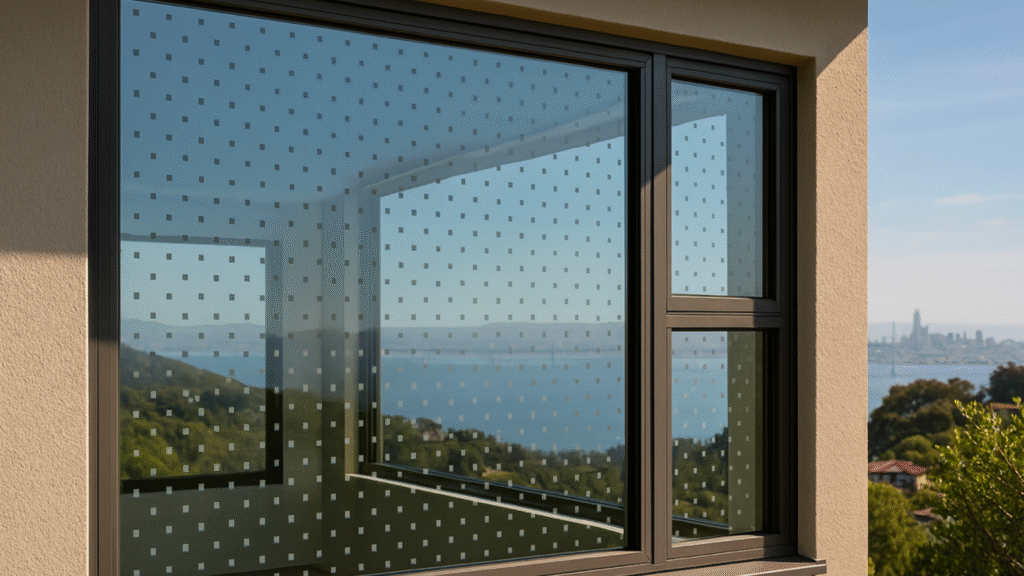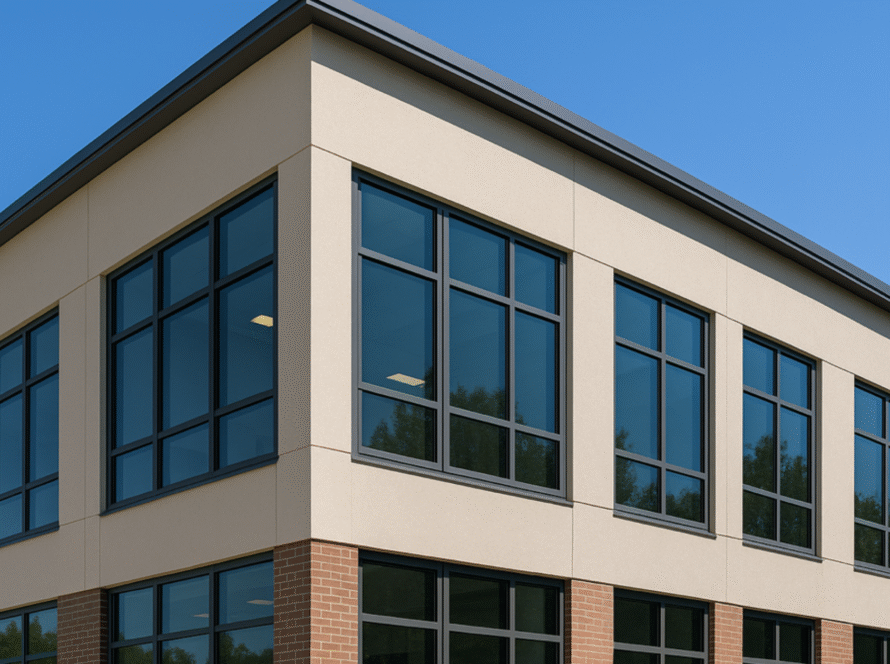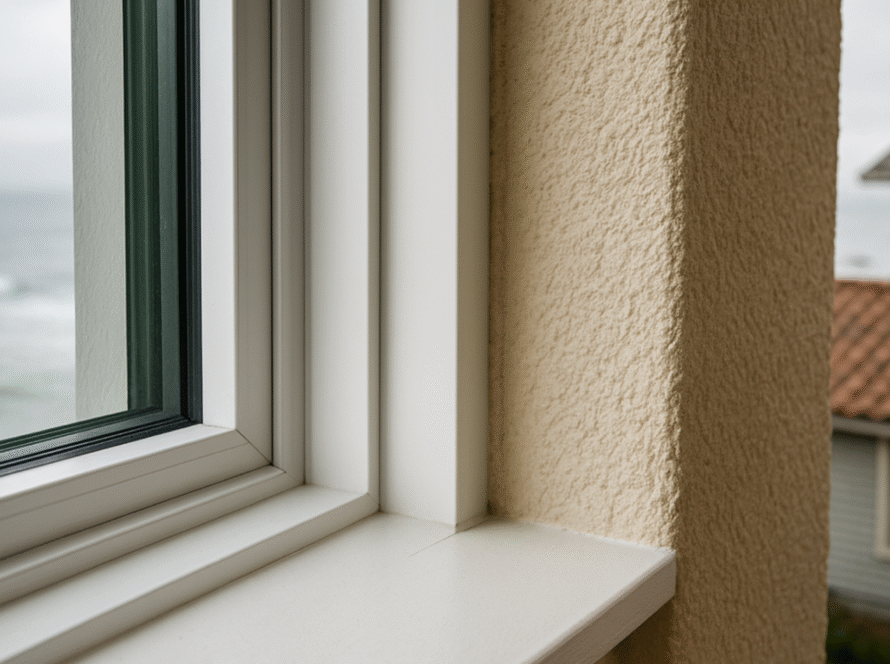
Installing bird friendly windows helps protect the millions of birds traveling through the San Francisco Bay Area’s Pacific Flyway while maintaining your home’s natural light and views.
Why Bay Area Homes Need Bird Safe Solutions
Bird friendly windows address a critical conservation issue affecting homes throughout the San Francisco Bay Area. More than 1 billion birds collide with window glass annually in the United States, with most incidents occurring at residential buildings. The Bay Area’s position on the Pacific Flyway migration route intensifies this problem as millions of birds pass through the region each spring and fall.
Birds don’t see glass. They perceive reflections of sky, trees, and vegetation as safe flight paths, or they see through transparent glass to plants on the other side. These visual illusions cause birds to fly directly into windows at speeds that result in fatal injuries. Understanding how to make windows visible to birds protects wildlife without sacrificing your home’s aesthetics or functionality.
The good news is that effective bird-safe window solutions exist for both existing homes and new construction. Bay Area homeowners can implement proven strategies that drastically reduce bird collisions while complementing modern architectural design.
Understanding Bird Collisions
Window glass creates two primary hazards for birds. Reflective glass mirrors surrounding vegetation, sky, or water features, creating illusions that appear as natural habitat. Birds attempting to reach these reflected elements collide with the invisible barrier.
Transparency poses the second threat. When birds see through windows to indoor plants or outdoor vegetation beyond, they perceive a clear flight path through the building. This “tunnel effect” causes birds to attempt flying through homes, resulting in window strikes.
Collisions occur year-round but increase dramatically during spring and fall migration. Dawn and dusk create particularly dangerous conditions as birds move between feeding and roosting areas. Bay Area’s coastal fog exacerbates problems by disorienting birds and reducing visibility.
Bird Friendly Window Solutions
Treatments for Existing Windows
Making current windows bird-safe requires treatments applied to the exterior surface of the glass where birds approach. Interior solutions remain invisible when strong reflections appear on outside glass, rendering them ineffective at preventing bird collisions.
The 2×4 Rule: Effective bird deterrence follows specific spacing guidelines. Patterns with horizontal spacing of 2 inches or less, or vertical spacing of 4 inches or less, prevent most bird strikes. This spacing prevents even small birds like hummingbirds from flying through gaps.
Window Films: Transparent films with patterns visible to birds but minimally intrusive to human vision offer excellent protection. These films apply directly to existing windows and come in various designs. Some films are removable, allowing seasonal adjustments based on migration patterns.
UV-reflective films create patterns that birds see but humans don’t. Most songbirds detect ultraviolet light, making these films effective barriers while maintaining clear views from inside. One-way films make windows appear opaque from the outside while preserving outward visibility.
Decals and Dots: Apply decals or dots across the entire surface of glass in patterns spaced 2 inches apart horizontally and vertically. Random placement of a few decorative decals doesn’t work—comprehensive coverage across all glass prevents collisions.
External Screens: Installing screens on window exteriors breaks up reflections while providing physical barriers birds can see and avoid. Standard mosquito screens work effectively when mounted outside rather than inside windows.
Paracord Curtains: Vertical cords hanging in front of windows create visible barriers. Space cords 4 inches apart—their three-dimensional nature makes them easier for birds to detect than flat decals. These “zen curtains” install easily and can be removed when needed.
Tempera Paint Patterns: For temporary or budget-friendly solutions, paint patterns on exterior glass using tempera paint or soap. Create grids with 2-inch spacing across the entire windows. This method requires reapplication after rain but provides immediate protection.
Planning window upgrades that protect Bay Area birds? Work with window replacement contractors who understand bird-safe design principles and can recommend appropriate glass products and treatments.
Bird Safe Glass for New Construction
When planning window replacement or new construction window installation, consider glass products manufactured with built-in bird deterrence features:
Fritted Glass: Ceramic patterns baked onto the glass surface during manufacturing create permanent, bird-friendly markers. These frit patterns follow the 2×4 spacing rule while offering design flexibility. The patterns never wear off or require maintenance.
Etched Glass: Acid-etched patterns on the exterior surface of glass provide durable bird deterrence. These patterns reduce reflectivity while maintaining adequate light transmission. Etched designs can be subtle yet effective.
Patterned Glass: Glass manufactured with integrated patterns, dots, or geometric designs alerts birds to solid barriers. These patterns become permanent parts of the glass rather than applied treatments.
UV-Reflective Coatings: Some glass products feature coatings that reflect ultraviolet light. Birds see these reflections as obstacles, while humans perceive clear glass. This technology works particularly well for species with strong UV vision.
Architectural Design Strategies
Beyond glass selection, architectural features reduce collision risks:
External Screens: Permanent exterior screens installed during construction prevent bird strikes, provide insect protection, and reduce solar heat gain. Professional window installation contractors can integrate these screens into building designs.
Angled Window Installation: Installing windows at slight angles directs reflected light downward rather than horizontally toward bird flight paths. This design approach reduces reflective hazards without additional treatments.
External Shading Devices: Awnings, overhangs, and exterior shutters block reflections, especially when the sun is low in the sky. These features also improve energy efficiency—a dual benefit for Bay Area homeowners.
Strategic Placement: Consider window locations during design phases. Avoid positioning large windows at corners where paired glass creates confusing reflection patterns. Minimize through-building sightlines that create tunnel effects.
Identifying Priority Windows
Not all windows pose equal danger. Start by identifying high-risk locations:
Large Picture Windows: Expansive glass areas create the strongest reflections and most dangerous see-through conditions. Treat these windows first.
Windows Near Bird Attractants: Any windows visible from bird feeders, bird baths, or garden areas must be protected. Birds moving between these features and natural cover face a high risk of collision.
Corner Windows: Paired windows meeting at right angles create reflection patterns that confuse birds attempting to navigate around buildings.
Ground-Level Glass: Lower windows near landscaping, especially those that reflect vegetation or water features, are frequent targets for birds flying at lower altitudes.
Walk outside and view your windows from a bird’s perspective. If you see sky, trees, or indoor plants reflected or visible through glass, birds perceive the same illusions.
Bay Area Specific Considerations
The San Francisco Bay Area’s unique geography and ecology create specific bird conservation needs:
Pacific Flyway Location: Millions of migratory birds use the Pacific Flyway corridor passing through the Bay Area. Spring and fall migrations bring increased numbers of species unfamiliar with urban landscapes.
Diverse Habitats: Benicia’s position near the Carquinez Strait, regional parks, and protected wetlands means homes exist near critical bird habitat. Waterbirds, raptors, and songbirds frequent these areas year-round.
Fog Impacts: Bay Area fog reduces visibility for birds and creates moisture on glass, amplifying reflections. Morning fog combined with dawn bird activity creates particularly hazardous conditions.
Urban Light Pollution: Artificial lighting attracts nocturnal migrants into urban areas where window strikes increase. Combining bird-friendly windows with responsible lighting practices maximizes protection.
Integrated Solutions
Effective bird conservation requires coordinated approaches:
Window Treatments: Apply proven deterrents in accordance with proper spacing guidelines on exterior glass surfaces.
Light Management: Turn off unnecessary lights at night during migration seasons. Close curtains or blinds to prevent interior light from attracting birds.
Feeder Placement: Position bird feeders within 3 feet of windows to prevent birds from building momentum before potential strikes, or place feeders more than 30 feet away.
When combining features like soundproof window installation or fire rated windows with bird-safe designs, professional contractors help identify solutions meeting all performance requirements.
Making Informed Choices
Selecting bird-friendly windows involves balancing wildlife protection with practical considerations:
Visibility vs. Protection: Some bird deterrents are more noticeable to humans than others. Films and fritted glass offer varying levels of visibility. Discuss options with suppliers to find solutions matching your aesthetic preferences.
Maintenance Requirements: Exterior treatments, such as paint, require periodic reapplication. Permanent solutions, such as fritted or etched glass, eliminate ongoing maintenance.
Cost Considerations: Budget ranges from inexpensive DIY solutions like tempera paint to premium bird-safe glass products. Start with high-priority windows and expand protection as budget allows.
Climate Compatibility: Bay Area’s mild climate allows year-round use of exterior treatments. Unlike harsh winter climates, treatments don’t face extreme weathering.
Conservation Impact
Individual actions create collective conservation benefits. When Bay Area homeowners adopt bird-friendly windows, they help protect regional bird populations that face multiple threats, including habitat loss, climate change, and human infrastructure.
Many bird species declining in population still face window-collision risks. Protecting common species such as warblers, thrushes, and sparrows helps maintain ecosystem health. Safeguarding less common species prevents further population declines.
The American Bird Conservancy and similar organizations continue researching glass products and testing methods to improve bird deterrence. Following proven guidelines based on this research ensures effective protection.
Create Bird Safe Homes
Bird-friendly windows represent straightforward conservation actions that Bay Area homeowners can implement immediately. Whether treating existing windows or selecting bird-safe glass for new construction, effective solutions exist for every budget and aesthetic preference.
The 2×4 spacing rule provides clear guidelines for DIY treatments, while manufactured glass products offer permanent solutions. Working with experienced professionals ensures the proper selection and installation of bird-deterrence features that protect birds without compromising window performance.
Consider bird safety alongside other window features when planning projects. Modern windows can meet energy efficiency, sound reduction, fire safety, and bird protection requirements simultaneously through thoughtful product selection and design.
Take action to make your Bay Area home bird-friendly. The simple step of making glass visible to birds prevents countless collisions and helps protect the diverse bird populations that make our region special.
Since 1987, Insight Glass has provided top-quality windows & patio doors in the Bay Area.
Call 707-746-6571 for Expert Installation!
CONTACT US TO GET A FREE ESTIMATE!


